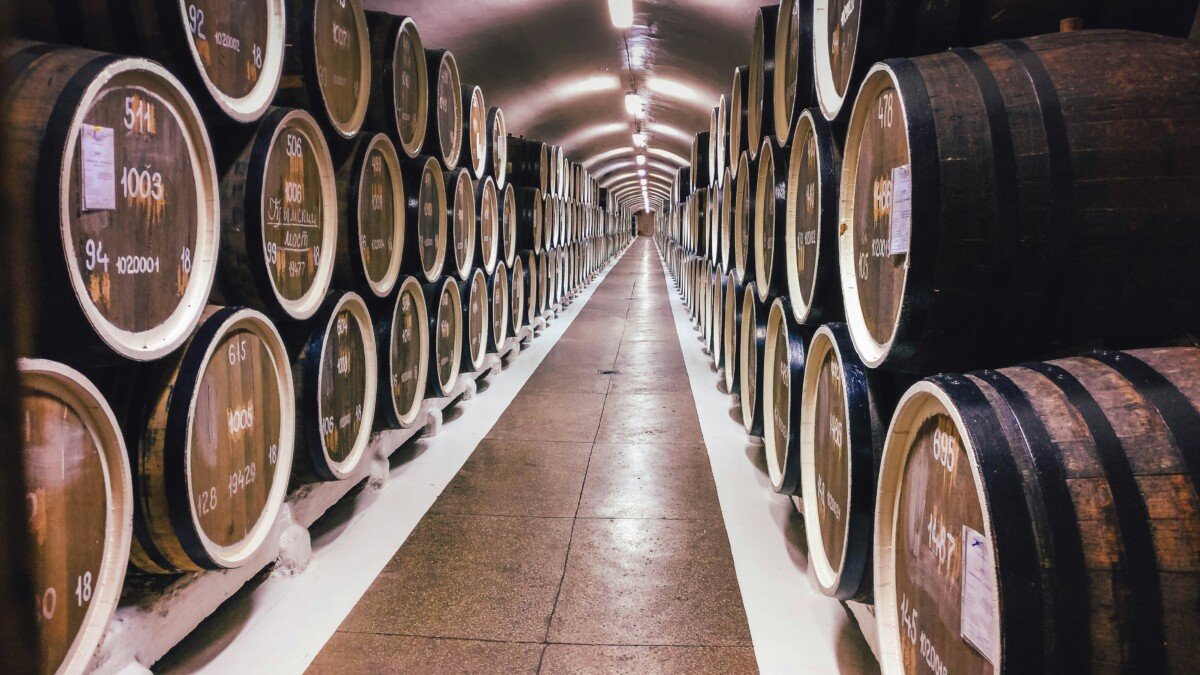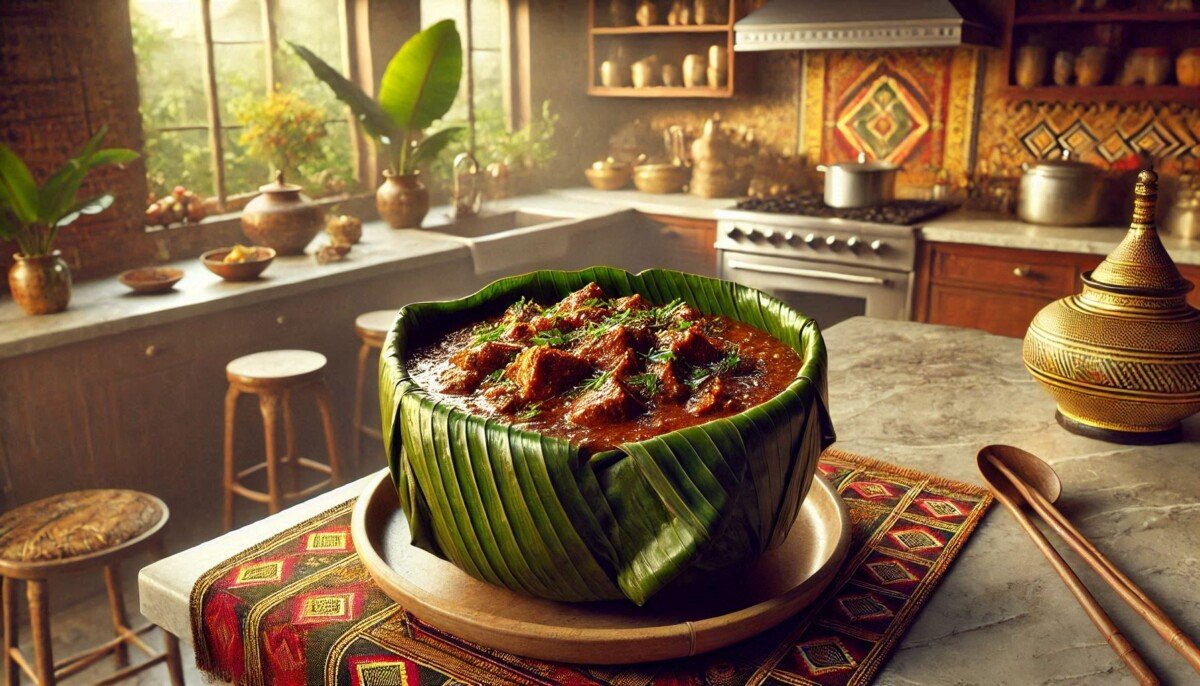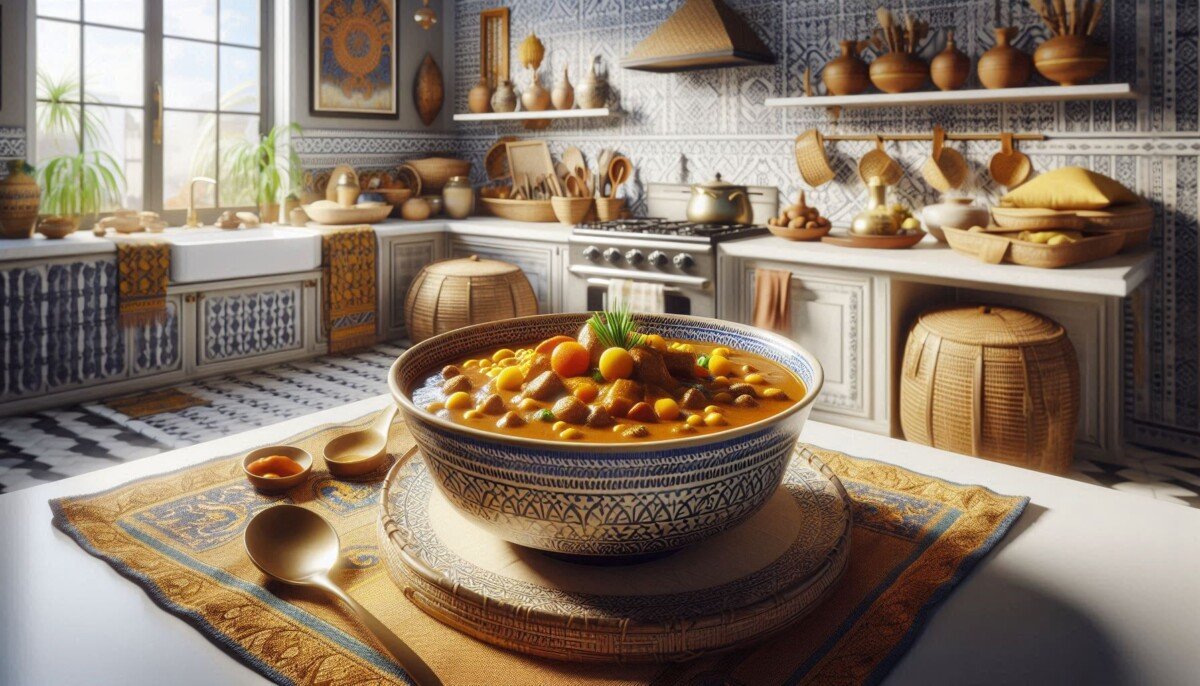Introduction to African Baklava
African Baklava represents an intriguing fusion of culinary traditions, offering a unique twist on the classic Middle Eastern dessert. Infusing the traditional layers of phyllo pastry with distinctly African flavors, this variant stands out for its regional ingredients and innovative preparation methods. Unlike its Middle Eastern counterpart, which typically relies on a harmonious blend of nuts, honey, and spices, African Baklava incorporates elements such as baobab fruit, ginger, and sometimes even local nuts like kola or peanuts, resulting in a refreshingly different flavor profile.
This adaptation of Baklava is especially popular in countries along Africa’s northern and northwestern coasts, including Morocco, Algeria, and Tunisia. In these regions, desserts are often influenced by a mix of Mediterranean and indigenous African culinary practices, creating a rich tapestry of flavors and textures that is evident in their interpretation of Baklava. The African version of the dessert not only pleases the palate but also tells a story of cultural exchange and historical interactions between Africa and other parts of the world.
Historically, the incorporation of African ingredients into Baklava is indicative of the region’s trade networks and the blending of African and Arabic culinary practices over centuries. These connections have brought a diverse range of ingredients and cooking techniques into African kitchens, and African Baklava stands as a testament to this rich cross-cultural exchange. Moreover, the adaptation of Baklava in Africa also brings forth the concept of fusion cuisine, where traditional recipes are reimagined with local ingredients to create something new and exciting.
In essence, African Baklava not only introduces a delightful flavor fusion but also symbolizes the dynamic nature of food as a cultural artifact. It exemplifies how classic dishes can evolve and adapt to new environments, garnering new meanings and greater appreciation across different cultures.
Ingredients and Their Significance
African Baklava, a delightful adaptation of the classic Mediterranean dessert, incorporates a rich tapestry of ingredients that reflect the continent’s diverse culinary heritage. The foundational ingredient is the phyllo dough, a staple in traditional baklava. However, African Baklava distinguishes itself through the unique combination of spices, nuts, and sweeteners that imbue it with deep, vibrant flavors.
One of the most distinguishing elements is the use of exotic spices. In African cuisine, spices such as cardamom, cloves, and cinnamon are prized for their aromatic and warming qualities. These spices are integral to the baklava, infusing each bite with a complex, fragrant sweetness that contrasts beautifully with the flaky phyllo layers.
Nuts are another critical component, with African Baklava commonly featuring cashews, peanuts, and almonds. These nuts, often toasted to enhance their rich, earthy flavors, provide a delightful crunch and depth to the dessert. Each nut brings its own distinct characteristics, creating a multifaceted texture and flavor profile. The choice of nuts is also a nod to their significance in African culinary traditions, where they are used extensively in both sweet and savory dishes.
Sweeteners in African Baklava often include natural ingredients like honey or molasses. These sweeteners contribute not only sweetness but also a slight tanginess and depth, enhancing the overall flavor complexity. Honey, in particular, is a treasured ingredient in many African cultures, symbolizing health and prosperity. Its use in the baklava imparts a glossy finish and inherent richness that sugar alone cannot achieve.
Additionally, some variations of African Baklava incorporate dried fruits, such as raisins or figs, adding another layer of texture and natural sweetness. These fruits are not only flavorful but also culturally significant, often used in traditional African recipes to celebrate abundance and community gatherings.
In sum, the ingredients of African Baklava—spices, nuts, sweeteners, and dried fruits—combine to create a dessert that is both familiar and extraordinary. Each component is carefully chosen for its flavor, texture, and cultural significance, resulting in a truly unique twist on a classic dessert.
Step-by-Step Recipe Guide
Preparing African Baklava is a delightful culinary journey that combines traditional techniques with unique flavors. This guide will take you through the process, ensuring that you achieve the best texture and flavor in your homemade African Baklava.
Ingredients:
- 1 package of phyllo dough
- 1 cup melted butter
- 2 cups mixed nuts (e.g., almonds, pistachios, and cashews)
- 1 cup desiccated coconut
- 1 cup sugar
- 1 teaspoon ground cinnamon
- 1 teaspoon ground cardamom
- 1 cup honey
- 1/2 cup water
- 1 teaspoon vanilla extract
- Zest of one orange
Preparation:
Step 1: Prepare the Nut Mixture
Chop the mixed nuts into fine pieces. Combine the chopped nuts, desiccated coconut, sugar, ground cinnamon, and ground cardamom in a bowl. Mix well to ensure the spices are evenly distributed throughout the nut mixture.
Step 2: Assemble the Layers
Preheat your oven to 350°F (175°C). Brush a 9×13 inch baking dish with melted butter. Place one sheet of phyllo dough in the dish, then brush it lightly with butter. Repeat this process with half of the phyllo sheets, buttering each layer individually.
Step 3: Add the Nut Mixture
Spread half of the nut mixture evenly over the layers of phyllo dough. Layer the remaining phyllo sheets on top, buttering each sheet as you go. Once all the sheets are layered, use a sharp knife to cut the baklava into desired shapes, such as squares or diamonds.
Step 4: Baking
Bake the baklava in the preheated oven for 45-50 minutes, or until the top is golden brown and crisp. While the baklava bakes, prepare the syrup.
Step 5: Prepare the Syrup
In a saucepan, combine the honey, water, vanilla extract, and orange zest. Bring the mixture to a boil, then reduce the heat and let it simmer for 10 minutes. Once the baklava is out of the oven, immediately pour the hot syrup over it, ensuring it seeps into all the cuts.
Step 6: Cool and Serve
Allow the baklava to cool completely and absorb the syrup before serving. This step is crucial to ensure the dessert has the perfect texture and flavor. For a variation, you can substitute the nuts with available local nuts or adapt the spices to your taste preferences.
With these steps, you can create a delectable African Baklava that will impress your guests and elevate your dessert repertoire.
Serving Suggestions and Pairings
When serving African Baklava, the presentation can significantly enhance the dining experience. This unique twist on a classic dessert pairs beautifully with various traditional dishes and beverages to bring out its rich and intricate flavors. For an authentic touch, consider serving African Baklava alongside traditional African spiced teas, such as Rooibos or Moroccan Mint tea. These herbal infusions can complement the sweetness and spice of the baklava, offering a balanced contrast.
For those who prefer coffee, an Ethiopian coffee, known for its robust and earthy flavors, can be an excellent pairing. The dark, rich notes of Ethiopian coffee highlight the complexity of the baklava, making each bite more pronounced. Alternatively, a lighter citrus-infused tea could also add a refreshing dimension to the dessert.
Garnishes play a key role in elevating the aesthetic and taste of African Baklava. A sprinkle of finely chopped nuts, such as pistachios or almonds, can add a delightful crunch and visual appeal. Additionally, a light dusting of powdered sugar or a drizzle of honey can enhance its sweetness and create an attractive presentation. For a hint of acidity, consider pairing slices of fresh citrus fruits like oranges or lemon wedges; these not only add color to the plate but also help balance the dessert’s richness.
To further enhance the cultural experience, it is worth noting that, in many African communities, desserts are often shared and enjoyed with family and friends in a communal setting. The serving of African Baklava can be accompanied by traditional rituals, such as the Ethiopian coffee ceremony—an elaborate process that emphasizes community and connection. This practice can transform your serving occasion into a memorable event, enriching the flavors of the baklava with a deeper cultural significance.
Whether served at a festive gathering or as a special treat at home, African Baklava presents an opportunity to explore and celebrate the diverse culinary traditions of Africa. The thoughtful pairing with beverages, strategic garnishing, and cultural customs contribute to a unique and delightful dining experience.















